
Mastering new cooking techniques is simply a matter of practice and will ultimately help you navigate across the kitchen like a seasoned chef. The Dutch Oven is a great piece of cookware to start sharpening your skill-set with, earning a reputation as a kitchen workhorse – and with good reason. This iconic piece of cookware epitomizes versatility and can be used for a variety of cooking techniques including, braising, searing, slow-cooking, sautéing, browning, and more.
The Dutch Oven is extremely versatile, but remains a beginner-friendly pot, allowing you to tackle new cuisines and cooking techniques. Dubbed the original multi-cooker, the Dutch Oven embodies the set-it-and-forget-it nature of cooking and is ideal for slow-cooking stews, or simmering soups and sauces. When it is not being used to prepare a delicious meal, this iconic pot also serves a variety of other purposes, making it a staple in households.
Here are 8 essential cooking techniques you can perfect in your Dutch Oven.
Cooking Techniques
The Dutch Oven is primarily known as a slow-cooking vessel, but can also be used for a variety of additional cooking techniques, including braising, baking, and roasting among others. Let us take a closer look at the versatile Dutch Oven.
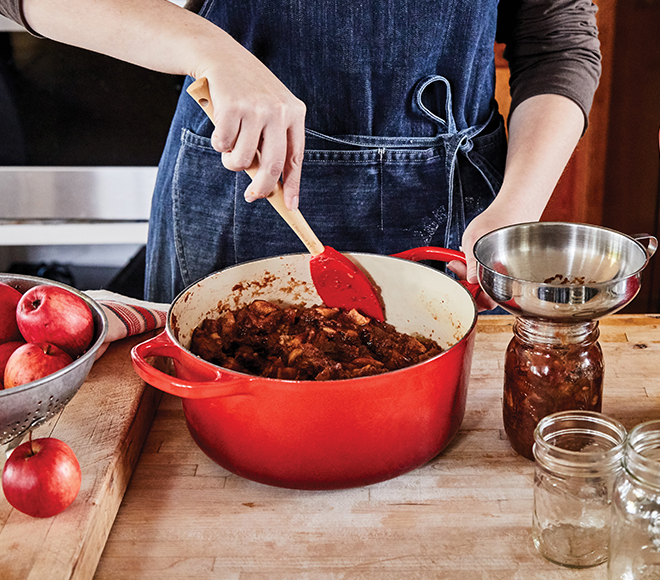
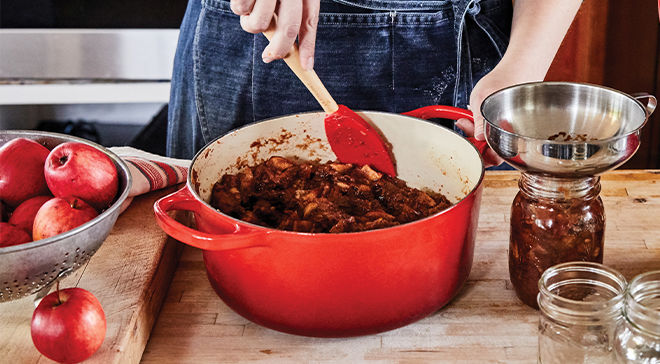
Slow-cooking
The Dutch Oven is perfectly suited for slow-cooking, and requires very little pre-meal preparation. Simply put, this technique involves cooking food on low heat over a long period of time. The Dutch Oven retains heat exceptionally well and is crafted to gradually infuse rich flavours over time thanks to its self-basting cycle.
The Dutch Oven’s thick walls and tight-fitting lid create the ideal environment for slow-cooking, locking in heat and moisture inside the pot. The design allows heat inside the pot to rise to the lid and the domed shape then allows the condensation from the steam to redistribute, keeping ingredients from drying out. Whether you’re looking to slow-cook a stew, or a soup, the iconic pot simplifies cooking and delivers a truly flavourful final dish. Experiment slow-cooking with the Dutch Oven with our white bean and kale stew recipe.
Simmering
Preparing delicious soups, sauces, and stocks in a Dutch Oven has never been easier. The Dutch Oven can be used to simmer ingredients to perfection without the fear of burning them. Much like slow-cooking, simmering uses low to moderate heat to soften meats, tough veggies and roots, and gradually introduce new flavours into the dish. All it really takes is a little patience!
The Dutch Oven’s tight-fitting lid is crucial to the simmering process, trapping heat and moisture inside the pot. While this cooking technique is traditionally used for soups, and stews, it can also be employed when preparing grains, or slow-cooking meat. The Dutch Oven’s sand-coloured enamel helps monitor your simmer with ease, ensuring no ingredients are burned in the process. Practice your simmering skills with these 10 Dutch Oven soup recipes.
Sautéing
Knowing how to sauté ingredients can make a world of difference when preparing a meal. Sautéing is designed to enhance the flavours of a dish by browning the surface of ingredients. The Dutch Oven’s enamelled cast iron construction makes it ideal for this cooking technique, offering superior heat retention to ensure ingredients get properly cooked. It is, however, crucial to preheat the Dutch Oven before introducing the small amount of fat in the pot. Sautéing is best suited to tender pieces of meat and fish as well as a variety of vegetables.
The Dutch Oven’s large base allows you to loosely pack meat or vegetables along the surface, exposing ingredients to a consistent heat source. Once the Dutch Oven reaches the appropriate temperature, simply toss the ingredients around.
Our beer steamed clams recipe is a great way to start sautéing with the Dutch Oven.
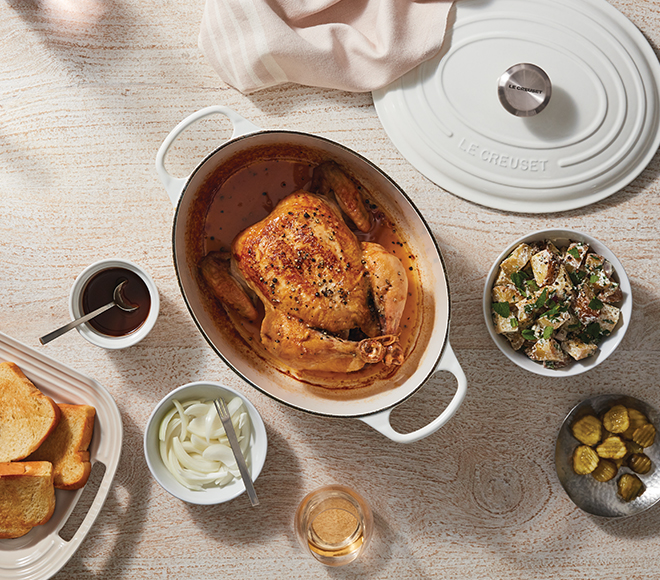
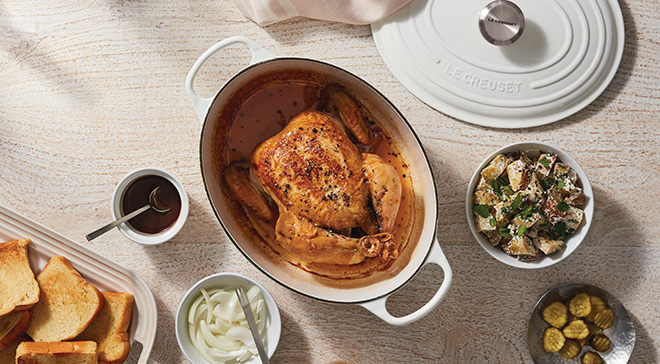
Roasting
The Dutch Oven has emerged as a convenient option to roast proteins and vegetables, including chicken, pork, some cuts of beef, and even fish. Traditional roasting pans can also be used, however, the Dutch Oven creates the ideal environment for meat to roast using indirect diffused heat.
Roasting typically enhances flavor in a dish by caramelizing and browning the surface of the food before slow-cooking it for hours on low heat. A slow-cooking vessel by nature, the Dutch Oven offers superior heat retention and cooks food evenly throughout. Perfect your roasting skills with this delicious pot roast chicken recipe for the whole family in the Oval French Oven!
Browning
Browning is typically used to inject flavour into meats, but can also be done on vegetables and desserts. The Dutch Oven can easily be used to brown food thanks to its large surface and material, consistently exposing ingredients to heat. The key with browning is to loosely pack the ingredients at the base of the Dutch Oven as overcrowding could lead to a drop in temperature and steaming.
Simply preheat the Dutch Oven to medium or high heat before browning your ingredient and lock in the heat and rich flavours with its tight-fitting lid. In any case, the Dutch Oven’s sand-colored enamel helps you keep a close eye on the browning effect as it should not take longer than a few minutes. Our beef stew with gremolata recipe begins with the browning of the beef shin before slow-cooking the meat until it is fall-off-the-bone tender.
Braising
While traditionally done in a braiser, braising is yet another cooking technique you can perfect with your Dutch Oven. This cooking technique essentially transforms rough cuts of meat into tender final dishes using wet and dry heat over a long period of time. The Dutch Oven works very much like a braiser, locking in heat and flavour with its tight-fitting lid and thick and high walls.
This technique relies on the self-basting design of the Dutch Oven, ensuring ingredients are tenderized as they slow-cook and maintains heat evenly throughout. This keeps food moist, even as it cooks slowly on low-heat for hours. Experiment with braising in your Dutch Oven with our pulled pork sandwich recipe, or visit our complete guide to braising for more information on this classic cooking technique.
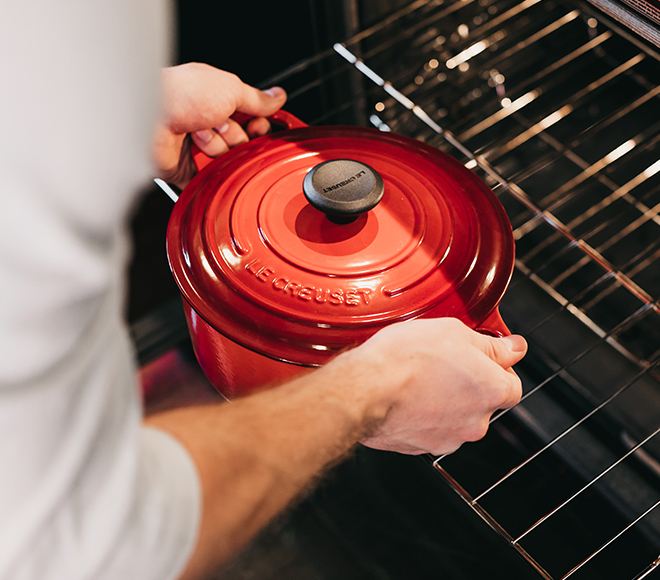
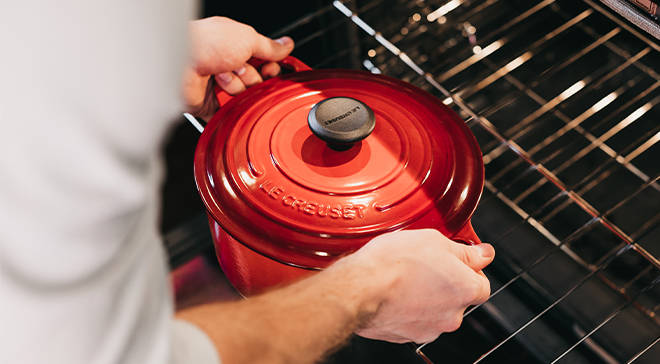
Baking
Baking has risen to the forefront during the COVID-19 pandemic with a number of home-cooks turning to this hobby to pass time. The Dutch Oven simplifies baking, offering hobby chefs the ability to tackle their favourite recipes with the minimum of fuss. Its rounded base and high walls are ideal for fresh dough to rise and make cleanup a breeze.
The Dutch Oven particularly epitomizes the set-it-and-forget-nature of cooking with baking, allowing this iconic piece of cookware to do much of the work. The Dutch Oven pot exposes the dough to a consistent heat source, and comes in a variety of shapes, accommodating different baked goods. Practice baking this delicious olive rosemary no knead bread in your Dutch Oven to get started.
Frying
Last but certainly not least, frying is yet another cooking technique that can be done in a Dutch Oven. The Dutch Oven is perfectly suited for this cooking technique, offering superior heat retention and exposing ingredients to a consistent heat source. Its large surface along with its ability to maintain heat makes it the ideal cooking vessel for frying.
Crafted with enamelled cast iron, the Dutch Oven can accommodate all the different frying techniques, including pan-frying, shallow-frying, stir-frying, and deep-frying. Its thick and high walls ensure cooking oils do not splatter, all-while trapping moisture within the pot.
Dutch Oven vs. French Oven
The terms French Oven and Dutch Oven are often used interchangeably given how similar these pieces of cookware are. In fact, the French Oven modernized the original Dutch Oven design from the 18th century, replacing the pure cast iron construction with enamelled cast iron. This slight change improves the French Oven’s heat retention and ensures its durability for years to come. It is also commonly referred to as a cocotte.
Get cooking with your Dutch Oven
Equipping your kitchen with a Dutch Oven is a great first step to mastering new cooking techniques. This iconic piece of cookware is extremely easy to use for seasoned and beginner chefs alike, simplifying cooking thanks to its self-basting cycle and superior heat retention.
From simmering a soup to perfection, to braising a rough cut of meat, and baking home-made bread, the Dutch Oven is as versatile as they come, accommodating a variety of delicious recipes. Constructed with enamelled cast iron, the Dutch Oven is built to last and can eventually be passed on generations.
These were just eight cooking techniques that you can try mastering with your versatile Dutch Oven. For more inspiration, visit our recipes or our blog and get cooking today!
